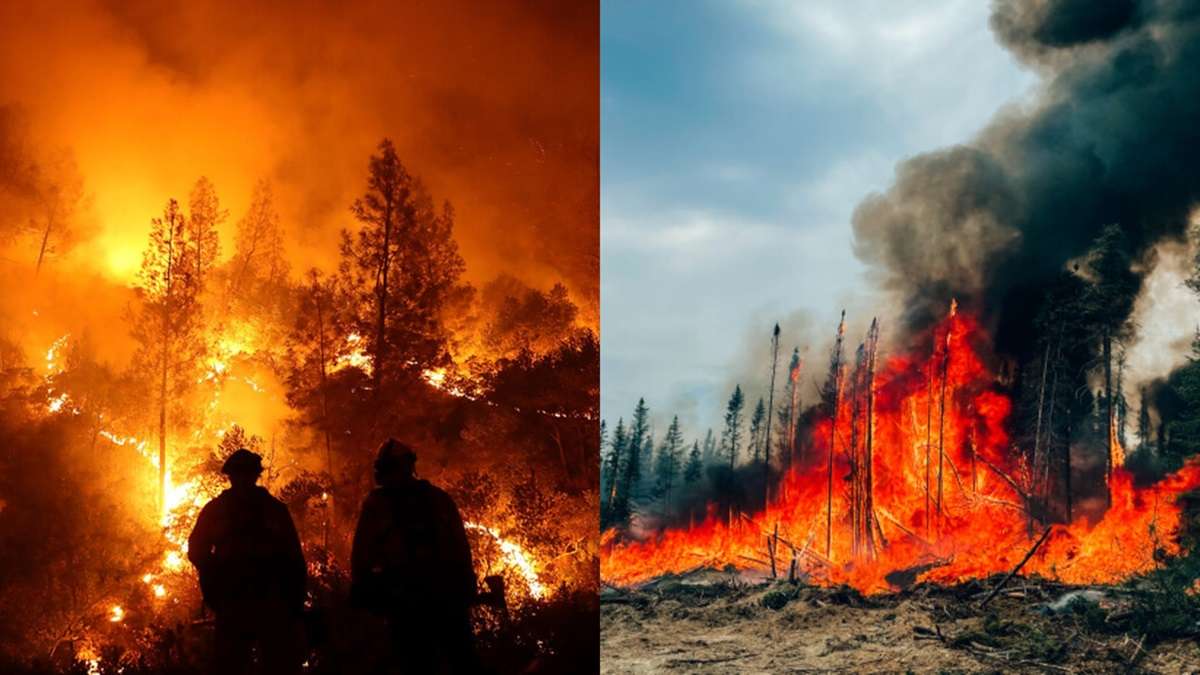Devastating wildfires have increased alarmingly in recent years, leaving a trail of burnt land and destroyed communities in their wake.
Wildfires have always been a part of the natural cycle, but recently, they have been more frequent and intense than ever before, raising the important question, “What’s fueling this inferno?” The complex relationship between wildfires and climate change holds the key to the solution. We’ll explore the ways by which climate change feeds the flames of these catastrophic occurrences in this extensive guide.
Knowing the Basics:
It’s important to understand the basics of wildfires before exploring the role of climate change. These are usually set off by a confluence of elements, such as dry weather, high temps, and igniting sources like lightning or human action. Wildfires are fueled by vegetation, wind, and topography, and they spread quickly once they start. But climate change is a powerful catalyst that exacerbates these circumstances and raises the risk of wildfires.
The Impact of Temperature Increases:
The continuous increase in global temperatures is one of the most obvious effects of climate change. The rising mercury makes the atmosphere more favorable for wildfires to spread. Higher temperatures cause more evaporation, which deters moisture from the soil and plants. As a result, landscapes are more prone to catching fire; little sparks have the power to start enormous fires.
Modified Precipitation Patterns:
Another factor contributing to the wildfire equation is the way that climate change is altering precipitation patterns. Prolonged droughts interspersed with infrequent, intense rainstorm events have become the new normal in many areas. These unpredictable precipitation patterns affect the environment in two ways: first, they dry up the flora, making it more flammable. Second, prolonged periods of heavy rain can hasten the growth of vegetation, which would provide an abundance of fuel for future flames. The unpredictable mix of floods and droughts creates the conditions for disastrous fire seasons.
Winds of Change:
The direction and pace of a wildfire’s spread are greatly influenced by the wind. Wildfire danger is increasing due to changes in wind patterns brought about by climate change. The rise of extreme wind events, like the Santa Ana winds in California and the Foehn winds in Europe, is one noteworthy development. These strong gusts not only exacerbate the flames but also help wildfires spread quickly, making containment operations very difficult.
The Wildfire and Climate Change Feedback Loop:
The occurrence of feedback loops, in which wildfires aggravate climate change, which in turn causes additional wildfires, is perhaps the most worrisome part of the climate-wildfire relationship. Massive volumes of carbon dioxide are released into the sky when forests burn, which intensifies global warming and the greenhouse effect.
Furthermore, the loss of vegetation increases the carbon imbalance by lowering the Earth’s ability to sequester carbon. This destructive cycle feeds the cycle of climate change, producing a vicious cycle that is self-reinforcing and has catastrophic effects on both communities and ecosystems.
Read Also: Environmental, economic benefits of tree planting
Effects on biodiversity and ecosystems:
The effects of wildfires brought on by climate change go far beyond scorched terrain and hazy skies. These infernos destroy habitats and threaten biodiversity, wreaking havoc on ecosystems. Long-term or intense wildfires have the potential to drive species that have acclimated to fire-dependent habitats beyond their limits of adaptation. Furthermore, a decline in biodiversity may have a domino effect that upsets natural processes and topples entire ecosystems.
Human Costs and Community Resilience:
Wildfires have a severe negative impact on human communities both directly and indirectly, in addition to wreaking havoc on the environment. These calamities leave a wake of wrecked houses, lost lives, and disrupted livelihoods. Living under continual fear of wildfires has a significant psychological cost that makes impacted populations more stressed, anxious, and traumatized. On the other hand, communities may increase resilience by taking preventative actions including early warning systems, construction that is fire-resistant, and land-use planning.
Strategies for Mitigation and Adaptation:
Handling the wildfire crisis calls for a multimodal strategy that incorporates both techniques for mitigation and adaptation. The primary goal of mitigation measures is to slow down the acceleration of climate change by lowering greenhouse gas emissions. This means establishing sustainable land management techniques, switching to renewable energy sources, and promoting global cooperation. In terms of adaptation, spending on measures like planned burns, fuel reduction, and community outreach is crucial for increasing resilience and lessening the effects of wildfires.
In summary, climate change is a significant threat in the fight against wildfires. The long-lasting droughts, intense heat waves, and unpredictable weather patterns that contribute to these infernos are clearly signs of their influence. At the municipal, national, and international levels, coordinated effort is required to address this existential threat. We can reduce the likelihood of wildfires and protect the environment for coming generations by tackling the underlying causes of climate change and putting adaptive measures in place.
